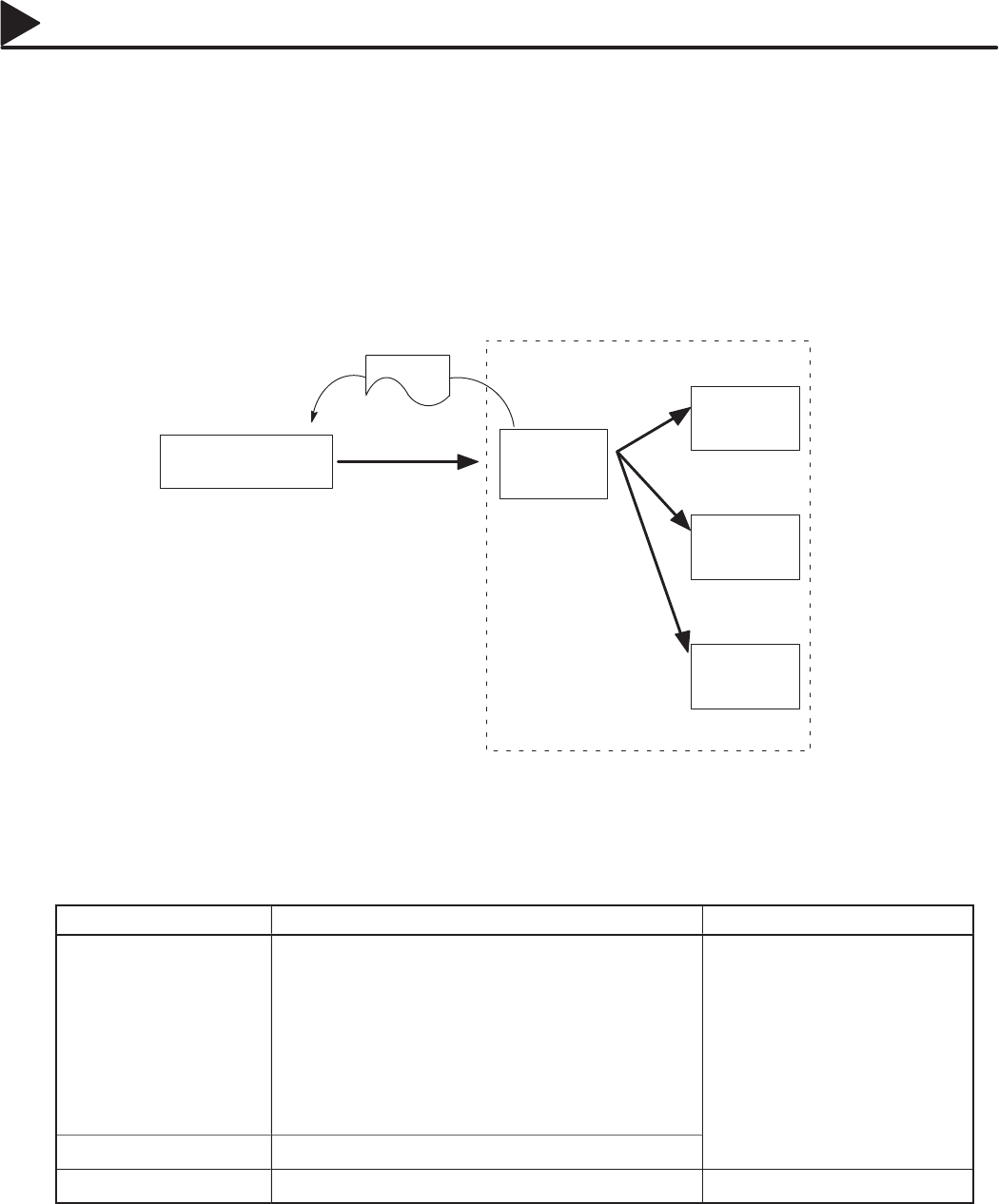
128
Relayed Transmission
General Description
Relayed Transmission is a feature which can save you time and transmission costs if you need to send the
same document to several facsimile stations at the same time. This is especially true if the transmissions
are long distance.
To use Relayed Transmission, you must be part of a ”Relay Network” built around a ”Relay Station”. That
is, when you send a document by Relayed Transmission, you actually send it to a Relay Station together with
instructions to relay it to one or more end receiving station(s).
The Relay Station first receives the document in its memory and then relays it to the end receiving station(s).
Example:
Initial Sending Station
End
Receiving
Station
End
Receiving
Station
End
Receiving
Station
Relay
Station
London
Stockholm
Berlin
Rome
RESULT REPORT
Local Call
New York
Compatibility with Other Machines
Table 1 shows the kind of facsimile machines which can make up a Relay Network used for Relayed
Transmission. Note that your machine can serve as an Initial Sending Station or End Receiving Station.
Table 1: Relay Network Compatibility Requirements
Station Compatible Model Special Settings
Initial Sending Station
UF-150 UF-312 UF-745
UF-160 UF-322 UF-750
UF-160M UF-342 UF-750D
UF-170 UF-550 UF-755
UF-250 UF-560 UF-766
UF-260 UF-620 UF-770
UF-270 UF-640 UF-788
UF-270M UF-650
UF-280M UF-733
UF-300 UF-744
Required. Please refer to the
individual User’s Guides of each
machine.
Relay Station UF-620 UF-650 UF-640 UF-M500
End Receiving Station ITU-T/CCITT G3 Compatible machines Not required.
06004000001
06004020001
#@multitude
06004050001
06004090002
06004020002
06004050002
06004080001


















